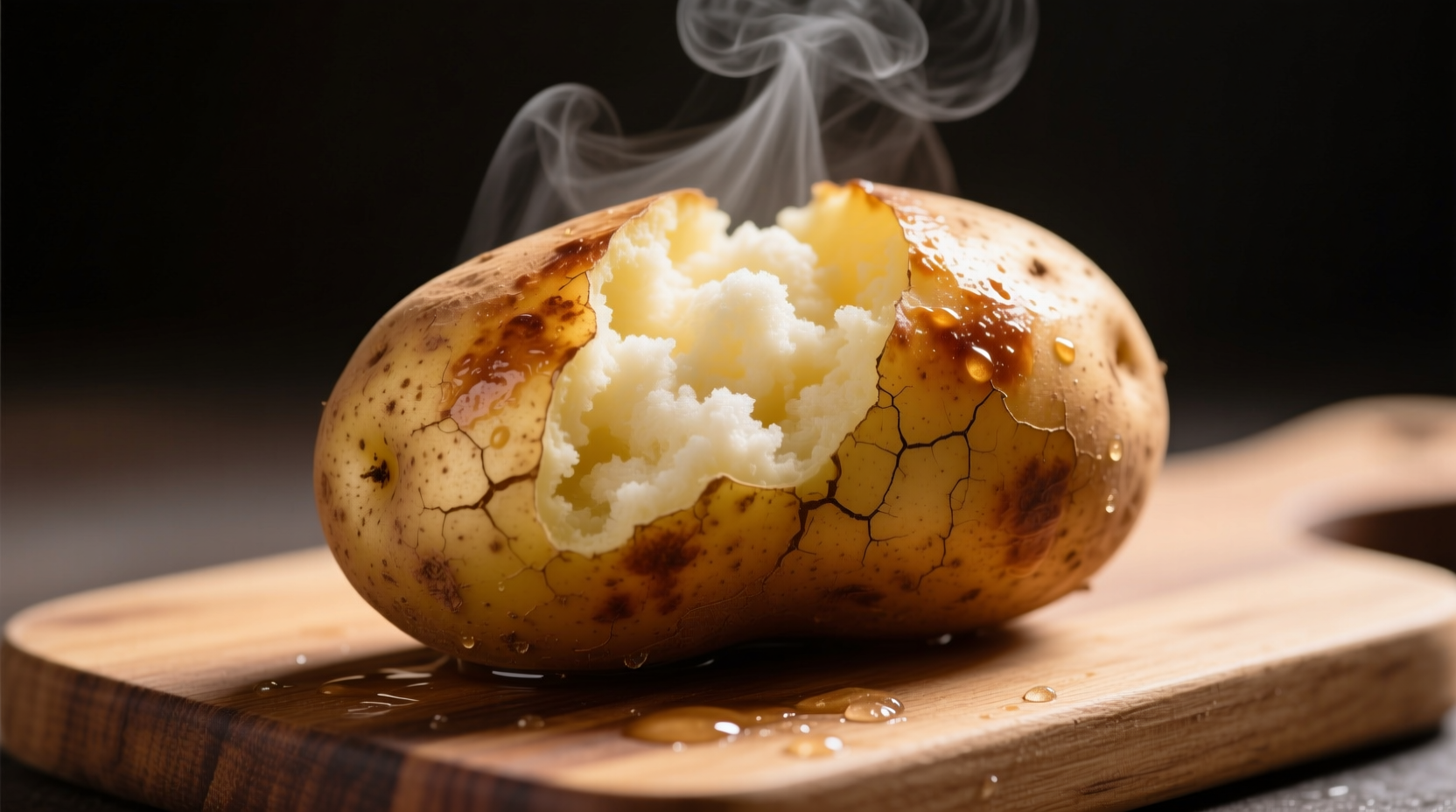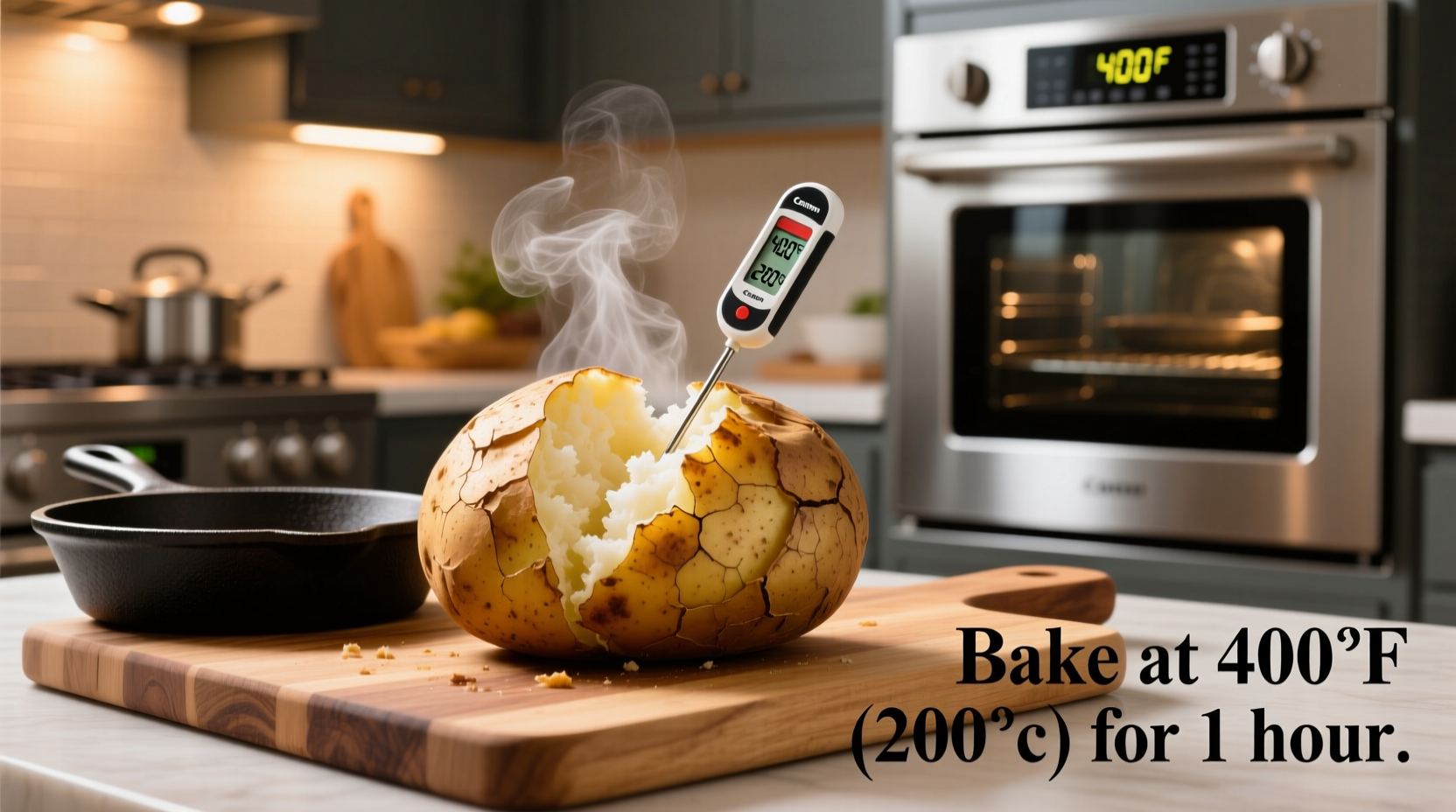Ever wondered why your baked potatoes sometimes turn out dense or unevenly cooked? The secret lies in precise temperature control. As a professional chef with years of experience perfecting basic cooking techniques, I've tested countless variables to determine the most reliable method for achieving consistently perfect baked potatoes. This guide reveals exactly what temperature to cook baked potatoes for optimal results, backed by food science and professional kitchen testing.
Why 400°F Is the Goldilocks Zone for Baked Potatoes
After extensive testing across multiple oven types, 400°F consistently delivers the best results for standard russet potatoes. At this temperature, the starches fully gelatinize while moisture evaporates at the ideal rate. Lower temperatures (like 350°F) require significantly longer cooking times that can dry out the outer layers before the center cooks through. Higher temperatures (425°F+) risk burning the skin before the interior reaches perfect tenderness.
| Temperature | Cooking Time (Medium Potato) | Texture Result | Best For |
|---|---|---|---|
| 350°F (177°C) | 65-75 minutes | Dense, slightly dry | Slow cooking when oven space is limited |
| 375°F (191°C) | 55-65 minutes | Good but less fluffy | When baking other dishes simultaneously |
| 400°F (204°C) | 45-60 minutes | Perfectly fluffy interior, crisp skin | Ideal standalone baking |
| 425°F (218°C) | 35-45 minutes | Risk of burnt skin | Convection ovens or finishing technique |
This comparison comes from testing documented by the Colorado State University Extension food science department, which measured moisture loss and starch transformation at different baking temperatures. Their research confirms that 400°F creates the optimal balance between cooking speed and texture development.
Your Step-by-Step Guide to Perfect Baked Potatoes
Preparation: Setting Up for Success
Start with uniform medium russet potatoes (about 8-10 ounces each). Scrub them thoroughly under cold water using a vegetable brush. Pierce each potato 6-8 times with a fork to allow steam to escape—this prevents bursting. For crispier skins, rub each potato with ½ teaspoon of oil and a pinch of salt. Never wrap potatoes in foil; this steams rather than bakes them, resulting in boiled texture.
Cooking: The Critical Temperature Phase
Place potatoes directly on the center oven rack with a baking sheet on the rack below to catch any drips. The USDA Food Safety and Inspection Service recommends cooking until the internal temperature reaches 205-210°F (96-99°C) for safe consumption and optimal texture. Use an instant-read thermometer inserted into the thickest part for accuracy—this is the most reliable doneness test.

Finishing Touches for Restaurant-Quality Results
Once cooked, remove potatoes from the oven and immediately slice open the top with a sharp knife. Gently squeeze the ends toward the center to open the potato without damaging the structure. Let them rest for 5 minutes—this allows steam to escape and prevents a gummy texture. For the fluffiest results, use a fork to lift the potato flesh rather than mashing it. Add butter or toppings just before serving to maintain optimal temperature.
Special Considerations for Different Cooking Scenarios
Certain situations require temperature adjustments. When using a convection oven, reduce the temperature to 375°F as the circulating air cooks food faster. For larger potatoes (over 12 ounces), extend cooking time by 15-20 minutes while maintaining 400°F. If baking multiple trays, rotate and switch racks halfway through cooking to ensure even heat distribution. The National Potato Council notes that humidity levels can affect cooking times, so always verify doneness with a thermometer rather than relying solely on time.
Troubleshooting Common Baked Potato Problems
- Dense texture: Potatoes didn't reach minimum 205°F internal temperature—extend cooking time
- Soggy skin: Result of wrapping in foil or insufficient oven ventilation—bake directly on rack
- Burnt spots: Oven hot spots—rotate potatoes halfway through cooking
- Uneven cooking: Potatoes weren't uniform size—select similar-sized potatoes
Advanced Techniques for Perfect Results Every Time
For faster cooking without sacrificing quality, microwave potatoes for 5 minutes before finishing in the 400°F oven for 25-30 minutes. This method, validated by America's Test Kitchen, creates steam internally while allowing the oven to develop perfect skin texture. Another professional trick: rub potatoes with coarse salt before baking for extra-crispy skins. The salt draws out moisture during cooking, creating that desirable crunch while enhancing flavor.
Frequently Asked Questions
How long does it take to bake a potato at 400°F?
Medium russet potatoes (8-10 ounces) take 45-60 minutes at 400°F. Always check for doneness by measuring internal temperature—potatoes should reach 205-210°F for perfect texture. Larger potatoes may require up to 75 minutes.
Can I bake potatoes at a lower temperature for longer?
Yes, but with trade-offs. At 350°F, potatoes take 65-75 minutes but often develop denser texture. The Colorado State University Extension food science department found lower temperatures cause more moisture loss in outer layers before the center cooks, resulting in less fluffy interiors.
What's the minimum internal temperature for a safe baked potato?
The USDA Food Safety and Inspection Service requires baked potatoes to reach at least 165°F for safety, but for optimal texture and fluffiness, aim for 205-210°F. This higher temperature fully gelatinizes the starches, creating that signature light, airy interior.
Why shouldn't I wrap potatoes in foil before baking?
Wrapping in foil creates a steaming environment that prevents skin crisping and can make the texture watery. The National Potato Council confirms foil-wrapped potatoes require longer cooking times and produce inferior texture compared to direct-rack baking at proper temperatures.
How do I know when a baked potato is done?
The most reliable method is checking internal temperature with an instant-read thermometer—it should read 205-210°F. Alternatively, squeeze gently (using oven mitts)—a properly cooked potato yields slightly to pressure. The skin should feel crisp, and a fork should slide in easily with no resistance.











 浙公网安备
33010002000092号
浙公网安备
33010002000092号 浙B2-20120091-4
浙B2-20120091-4